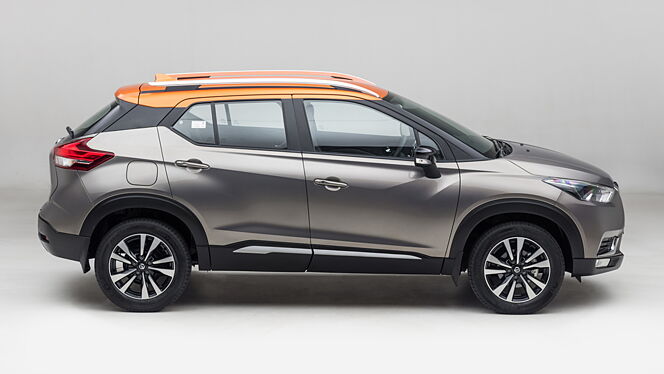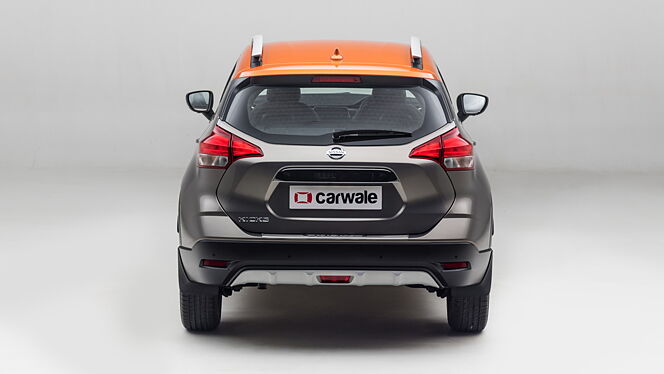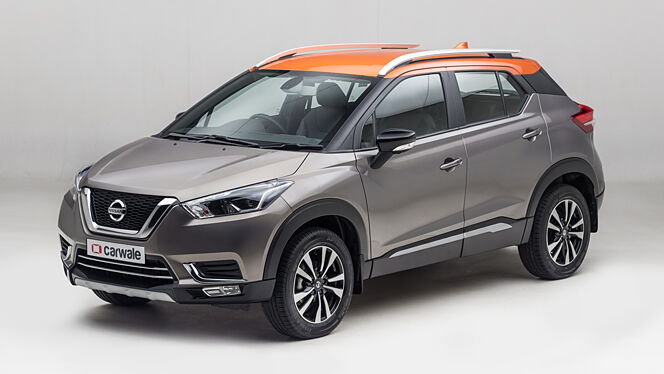Nissan Kicks XV Pre (O) 1.5 D [2019]
Variant
Nissan Kicks XV Pre (O) 1.5 D [2019] Summary
Nissan Kicks XV Pre (O) 1.5 D [2019] Review
It’s a crossover built for city-dwellers to tackle everything the urban jungle can throw at it. Let’s take a look and see if the new Nissan Kicks is any good.
Introduction

Introducing a new model in a fiercely contested segment is a tough task. But, aiming to take buyers away from heavyweights such as the Hyundai Creta or the Maruti Suzuki Brezza with a fairly lesser known badge is even harder. That’s the heroic task the new Nissan Kicks has taken upon itself as it shares showroom floor with popular crossovers. Unlike Nissan’s previous stab at this segment – the Terrano, which was basically a rebadged Renault Duster, the Kicks is an entirely new product. It’s a crossover built for city-dwellers to tackle everything the urban jungle can throw at it. Let’s take a look and see if it’s any good.
Design and style

Let’s talk numbers first. The Kicks is over 4.3 metres long, 1.8 metres wide and 1.65 metres in height, meaning it’s noticeably longer and wider than the Hyundai Creta but not as tall. Its 2673mm wheelbase, too, is longer than the Hyundai. As for the ground clearance, the Kicks stands tall and above the rest, at 210mm. All in all, it’s looking good so far but what about the design?
The production version retains the basic design cues taken from the Kicks concept first shown at the 2014 Sao Paulo Motor Show. You will find familiar Nissan design elements like the V-Motion grille, boomerang-style headlights and taillights, and the floating roof with a wrap-around look to the windscreen and side glass. With the C-pillar ‘hidden’ with a black finish that blends into the tailgate glass, it seems that the floating roof concept has been exaggerated on the Kicks, giving it a unique appearance when viewed from the rear. Speaking of the rear, it is arguably the best part of the exterior design as the extremely raked tailgate and the sharply-designed wraparound taillights are something that are new to this segment. For the India-spec model, Nissan has tinkered with a few things – unlike the Kicks that is sold overseas, the door sills on this car are actually part of the doors. Interestingly, Nissan says this redesign makes it easier to get in and out with traditional clothes.

You may or may not like the contrasting roof colour or the steeply raked D-pillar, however, there is no denying that these design features make the Kicks stand out from the pack. All in all, the Kicks is a fairly good looking crossover. It might not be as flamboyant or in-your-face as the Ecosport but then it’s not as simple looking as the Creta either. Being the longest and widest in its class, the Kicks has a good deal of road presence as well, which is a big plus in this segment.

Interior

As funky as the exterior is, the Kicks’ cabin is sophisticated in its design, surprisingly spacious and well finished for the most part. Unlike most new SUVs that seem to cram a lot of materials and switchgear on to their dashboard, the dash design in here is clean and straightforward. We especially like the simplicity of the centre console and the climate control panel. As for the quality, it’s a mixed bag. For starters, the middle part of the dash, door armrests and the middle armrest is covered in soft touch materials which lend a premium feel to the cabin. However, there are also shiny hard plastics on the door pads and the lower half of the dash. What affects the overall ambience further are the sheer number of old-design parts shared with existing Renault-Nissan products. The climate control panel, steering column mounted audio controls, cruise control switch and the window switches all come from the Duster and the Captur.

As for space and comfort, the dashboard is set slightly high, but there is a kink on the window line which improves sideward visibility. The front seats are adequately large and the generous side bolstering does a good job of keeping you in place. The legroom and headroom are great, too. The second row, meanwhile, is equally supportive with a bench that offers adequate thigh support and a nicely contoured backrest. The Nissan’s extra width over its competitor’s pays dividends as you get more lateral support than most of its rivals and to top it off, the backrest angle is close to perfect as well. The Kicks also offers air vents at the back and cup holders in the armrest for added convenience.

The second-half of the cabin isn’t as practical as we would like – there is no 60:40 split option for the seats and the 400-litre boot is down on capacity compared to the Kicks sold overseas. Fortunately, the loading area is fully flat and squared out, meaning it’s easier to stuff heavy items.

Safety and Equipment

You pay a high price for the top-spec XV (O) version but then you also get a long list of equipment as standard. The Kicks gets an entirely new infotainment system that comes with a slick eight-inch display. The floating screen, in fact, is of high quality and the touch response is great as well. It’s also the most loaded in this segment – you get smartphone mirroring tech, Apple CarPlay, Android Auto and built-in navigation. That said, our favourite feature is the surround camera view which uses four cameras to present a 360-degree view of the car. It’s something unheard of in this segment and inded, makes for a useful feature on every drive. This variant also gets LED projector headlights, functional roof rails with 100kg capacity, leather seats, climate control, automatic headlamps, automatic wipers, height adjustable driver’s seat and twin parcel shelf. In terms of safety, the Kicks comes with four airbags, ABS, EBD and speed sensing door locks as standard.

Engine, Performance and Braking

For this road test we have the more popular diesel version of the Kicks which can be best described as ‘competent’. Nissan has continued with the tried and tested 1.5-litre K9K diesel motor. However, we would like to add that there is a vast difference in the way the Kicks and the Captur/Duster behave on the road.
The Kicks and the Captur share the same engine which makes 110bhp/240Nm, but the level of refinement on the move is much higher with the former. The Kicks is significantly quieter thanks to better insulation and a more refined version of the same 1.5 motor – one can hardly hear the diesel clatter once the windows are up. What’s more, this new offering also accelerates in a more linear manner than the Captur when the motor is on boost. The engine feels more effortless in the mid-range than even the Creta’s 1.6-litre unit, however, there is still turbo lag under 2,000rpm, post which the Kicks pulls strongly till 4,000rpm.
There’s more than enough torque in the midrange to propel the Kicks through traffic without ever feeling like its engine is working too hard. In our acceleration and roll-on tests, the Kicks posted some quick numbers, hitting 100kmph from standstill in 11.66 seconds. It did 20-80kmph in third in just 6.79 seconds and took 8.76 seconds to accelerate from 40-100kmph in fourth, resulting in significantly quicker roll-on times compared to its rivals. To our surprise, even the clutch feel is different – it’s more precise and not too heavy. Speaking of the clutch, it’s paired to a slick-shifting six-speed manual gearbox that offers positive throws. The only downside, as we see it, is the lack of an automatic option for the diesel Kicks.

Ride and Handling

We have said it before and the fact remains that the Nissan’s B0 platform vehicles including the Duster, the Captur and now the Kicks are tremendously capable when it comes to dealing with rough roads. Naturally, the Kicks behaves better over bad roads than its rivals – it simply hovers across ruts and small potholes without unsettling itself. Yes, it is slightly stiff compared to the Creta but the trade-off to this is better high speed poise when driving over undulated roads. Perhaps the most impressive bit is the way it rebounds quickly from any sharp bump you might encounter, regaining composure almost immediately. Unfortunately, the Kicks also suffers from the high speed steering judder that’s present in the Captur and the Duster. When taking corners at high speeds, the steering judders quite a bit, something that could be unnerving for some drivers.
Price and Fuel Economy

On-road prices for the Kicks start at Rs 11.20 lakhs for the base XL petrol trim, going all the way till Rs 17.64 lakhs for the top-spec XV Pre diesel that we have here. As for the all-important fuel efficiency, the diesel version returned 12.90kmpl in the city and 16.12kmpl on the highway under our testing cycle.
Specification
| CAR NAME | Nissan Kicks |
| Variant | XV (O) 1.5D |
| ENGINE | |
| Fuel | Diesel |
| Installation | Front, transverse |
| Displacement | 1461cc |
| Bore/stroke | 76mm/80.5mm |
| Valve gear | 4 valves per cyl |
| Power | 109bhp at 3850rpm |
| Torque |
240Nm at 1750rpm |
| Power to weight | - |
| Torque to weight | - |
| Gearbox | 6-speed manual |
| CHASSIS & BODY | |
| Kerb weight | 1400kg |
| Tyres (F/R) | 215/60 R17 |
| Spare | Full Size |
| STEERING | |
| Type | Rack and pinion |
| Type of assist | Electric |
| Turning circle | 10.5m |
| BRAKES | |
| Front | Ventilated Discs |
| Rear | Discs |
| Anti-lock | Yes |
Test Data
| CAR NAME | Nissan Kicks |
| Variant | XV (O) 1.5D |
| PERFORMANCE & BRAKING | |
| 0-20kph | 1.49s |
| 0-40kph | 3.64s |
| 0-60kph | 5.83s |
| 0-80kph | 8.43s |
| 0-100kph | 11.66s |
| 0-120kph | 15.93s |
| 20-80kph in 3rd gear | 6.79s |
| 40-100kph in 5th gear | 8.76s |
| 80-0kph | 2.23s / 24.55m |
| FUEL ECONOMY | |
| City | 12.90kmpl |
| Highway | 16.12kmpl |
| Tank size | 50-litres |
| Range | 625km |
| INTERIOR MEASUREMENTS | |
| Front | |
| Legroom(Max/min) | 820/630mm |
| Headroom(Max/min) | 970/930mm |
| Shoulder room | 1320mm |
| Backrest height | 630mm |
| Rear | |
| Legroom(Max/min) | 840/640mm |
| Ideal legroom | 680mm |
| Headroom | 950mm |
| Shoulder room | 1320mm |
| Seat base length | 470m |
| Backrest height | 590mm |
| Boot | |
| Length/width/height | 960/990/510mm |
| Loading lip height | 730mm |
Kicks XV Pre (O) 1.5 D [2019] Specifications & Features
- Specifications
- Features
- Specifications
- Features
Specifications
Engine & Transmission
- Engine1461 cc, 4 Cylinders Inline, 4 Valves/Cylinder, DOHC
Timely services will keep a motor efficient and in top shape.
- Engine Type1.5 K9K dCi Diesel
The official title given by the manufacturer in terms of the name of the engine, the displacement and the number of cylinders.
A bigger displacement and more than four-cylinders generally indicate a performance-oriented engine.
- Fuel TypeDiesel
All cars in India either run on petrol, diesel, CNG, LPG or electric power.
- Max Power (bhp@rpm)109 bhp @ 3850 rpm
Gives a good idea of the performance of the vehicle under full thrust. A higher figure here usually means a higher top speed as well.
Higher the power, the peppier the engine but it can also affect fuel economy.
- Max Torque (Nm@rpm)240 Nm @ 1750 rpm
Relates to in-gear acceleration. A higher figure here means better roll-on acceleration, fewer gear shifts, and possibly better fuel efficiency.
The more torque at low RPM range makes the engine feel more responsive. It also allows the engine to run smoothly without too many gear changes.
- Mileage (ARAI)19.39 kmpl
This is the maximum fuel efficiency that an engine gives. All numbers are provided by the manufacturer based on tests conducted and specified by the standards of the ARAI (Automotive Research Association of India)
Such fuel efficiency attained while driving in special conditions makes it unlikely to get it in real-world conditions
- DrivetrainFWD
Cars come with different drivetrain configurations depending on the segment.
Front-wheel drive (FWD) is most common in mainstream cars while expensive cars or SUVs come with rear-wheel drive (RWD) or all-wheel drive (AWD).
- TransmissionManual - 6 Gears
Type of transmission used to transfer power from the engine to the wheels
A manually operated transmission is the most popular type, thanks to its simplicity and low cost. Varied types of automatic transmissions are also available.
- Turbocharger / SuperchargerTurbocharged
Manufacturers today offer turbochargers to boost engine power without affecting its fuel economy. Superchargers are found in more expensive cars but on the downside, they are not very efficient.
Turbochargers are more effective but require plenty of heat management. Superchargers, meanwhile, offer linear bump in power but they are comparatively more complex.
- Valve/Cylinder (Configuration)4, DOHC
Dimensions & Weight
- Length4384 mm
The length of the car decides its segment. In India, cars that are less than 4 metres in length enjoy reduced excise duties.
- Length: 4384
Longer length results in more cabin space. It also adds to straight line stability.
- Width1813 mm
A car's width is defined as its widest point without its mirrors.
- Width: 1813
Although more width gives you more lateral space inside the cabin, it makes the car more difficult to park in narrow spots.
- Height1651 mm
The height of the car denotes the highest point of the vehicle from the ground.
- Height: 1651
Taller the car, the more headroom there is on offer inside the cabin. However, a tall boy stance also affect the car’s centre of gravity which can cause more body roll.
- Wheelbase2673 mm
The space between the center of the front and rear wheels.
- Wheelbase: 2673
The longer the wheelbase, the more space there is inside the cabin.
- Ground Clearance210 mm
It’s the space between the lowest point of the car and the ground.
- Ground Clearance: 210
If the car has a good amount of clearance, it’s easier for it to clear big speed breakers and overall, deal with bad roads.
- Kerb Weight1387 kg
The total weight of the vehicle with all the standard equipment and all the required fluids.
A lightweight car will always be more efficient and easier to manoeuvre whereas a heavy car would give you a sense of solidity while driving.
Capacity
- Doors5 Doors
The number of doors define the category of car. For example – four door means sedan, two-door means coupe while five-doors usually refer to a hatchback, MPV or an SUV.
- Doors: 5
- Seating Capacity5 Person
The number of people that can be seated comfortably in the car, which has also been mandated by the car manufacturer.
- No of Rows2 Rows
Smaller cars usually have two rows which can seat five, but some SUVs and MPVs have three rows and can seat around 7-8 passengers.
- Bootspace400 litres
Boot space defines how practical the car is with respect to how much luggage it can carry.
- Bootspace: 400
A boot with a large and wide opening is ideal for loading heavy items. Additionally, a lower loading height also makes it easy to put in luggage.
- Fuel Tank Capacity50 litres
The official volume of the fuel tank of a car, usually denoted in litres.
If a car has a large fuel tank, it can cover long distances without refuelling.
Suspensions, Brakes, Steering & Tyres
- Front SuspensionMcpherson strut with coil spring stabilzer bar & Double acting, Shock Absorber
Almost all cars in India use an independent front suspension which is usually the MacPherson Strut type.
- Rear SuspensionTorsion Fleam with coil springs & Double acting, Shock Absorber
The rear suspension can either be non-independent or independent.
Most of the budget cars have non-independent suspension while the more expensive ones get independent rear suspension which offers better bump absorption.
- Front Brake TypeDisc
Most of the vehicles sold in India get ventilated or non-ventilated disc brakes upfront.
- The ventilated discs are more popular thanks to them providing better stopping power and it also works well in hot conditions.
- Rear Brake TypeDrum
In affordable cars, drums brakes are fitted at the rear as they are cost effective.
Disc setup at the rear is now getting more popular as cars are getting faster in the real world.
- Minimum Turning Radius5.2 metres
The official kerb-to-kerb minimum radius a car takes to complete a 180-degree turn.
Shorter the turning radius, the lesser space you need to make a tight turn or to take a U-turn.
- Steering TypePower assisted (Electric)
Almost all steering systems in cars today have an assist to help park them better at low speeds - these can be hydraulic, electro-hydraulic or electric.
- WheelsAlloy Wheels
The wheels used on cars are either steel rims with plastic wheel cover hub or alloy wheels on higher spec models or expensive cars.
Razor cut, or diamond cut alloy wheel design are not getting more popular. Manufacturers usually offer these in top-end trim of their car models.
- Spare WheelSteel
Important in a country with varying quality of roads, spare wheels ensure one doesn’t get stranded when one of the main tyres gets damaged.
Select premium car models feature space savers (smaller than the stock wheels) to save on boot space.
- Front Tyres215 / 60 R17
The profile/dimension of rubber tyre that fits on the front wheels.
- Rear Tyres215 / 60 R17
The profile/dimension of rubber tyre that fits on the rear wheels.
Features
Exterior
- Sunroof / MoonroofNo
Ensure the sunroof is closed before exiting the vehicle to prevent dirt/rain from entering the cabin
- Roof-mounted AntennaYes
The compactness of the roof-mounted antenna prevents its damage in certain situations
- Body-coloured BumpersYes
Having parking sensors will save your bumper paint if it brushes by obstacles
- Chrome Finish Exhaust PipeYes
- Body KitCladding - Black/Grey
Functional or purely aesthetic parts added to the car's body such as side skirts and roof/bonnet scoops
- Rub-stripsNo
A strip of rubber fitted to the sides of the car's doors or bumpers to prevent dents and dings
Opt for quality strips because the cheaper ones tend to come off too soon/look shabby.
Braking & Traction
- Anti-Lock Braking System (ABS)Yes
An electronic system that prevents the tyres from locking and skidding in emergency braking situations by pulsing the brakes (quickly releasing and reapplying the brakes)
ABS is a great accident prevention technology, allowing drivers to steer while braking hard
- Electronic Brake-force Distribution (EBD)Yes
An electronic system that redirects braking forces among the four brakes to stop the car as quickly and stably as possible
- Brake Assist (BA)Yes
A system that increases brake pressure to help the car stop quicker
Even when emergency braking, it is observed that drivers don’t apply maximum brake pressure through the pedal, the BA system provides additional pressure to help stop the car quicker
- Electronic Stability Program (ESP)Yes
System designed to improve car stability and control, especially when the car is accelerating.
ESP or ESC cannot increase traction but rather improve control or help regain control in slippery conditions.
- Four-Wheel-DriveNo
A system that sends the car's power to all the four wheels at the same time
- Hill Hold ControlYes
A feature that prevents the car from rolling backwards when stopped on a slope
- Traction Control System (TC/TCS)No
This system cuts power to those wheels that are spinning without grip/traction
Given the option, keep traction control on all the time.
- Hill Descent ControlNo
A feature that limits the car's speed without any driver input while traversing down descents
- Limited Slip Differential (LSD)No
This function prevents wheelspin and maximises traction by shuffling torque between wheels
It is also a nifty safety feature since it offers more control over a vehicle's power delivery
- Differential LockNo
Locking differentials split power/torque evenly among both tyres on an axle.
In off-road vehicles, locking differentials allows for better traction when one of the wheels is in the air, in FWD/AWD cars allows for better corner traction and in RWD sports cars allows for drifting around corners.
Safety
- Overspeed Warning-
Mandatory safety system for cars sold in India, a single beep is emitted after 80kmph and continuous ones after 120kmph
- Lane Departure Warning-
This function detects when the car is drifting out of its lane and cautions the driver through audio/visual alerts
- Emergency Brake Light Flashing-
The brake lights flash in a quick intermittent fashion to indicate to the following vehicles to slow down quicker than usual
- Forward Collision Warning (FCW)-
The driver is warned of an impending crash due to stopped/slowing vehicles ahead of them
- Automatic Emergency Braking (AEB)-
This system automatically stops the car if it senses an obstacle where the driver fails to take action
It is imperative to pay attention while driving and rely less on such systems
- High-beam Assist-
This feature spots oncoming vehicles at night to shift the headlight between high and low beam
- NCAP Rating-
The official crash test safety rating given to a car by one of the many testing agencies around the world
- Blind Spot Detection-
Blind Spot Detection systems use sensors to detect and alert the driver of any sudden movements in his/her blind spot
- Lane Departure Prevention-
This feature automatically steers the car to prevent it from moving out of the lane when there is no driver input
- Rear Cross-traffic Assist-
An assistance feature that alerts the driver who is backing out of a parking space if another vehicle is approaching
One must always be cautious of pedestrians, children and other obstacles when backing up.
- Airbags-
- Rear Middle Three Point seatbeltNo
Safer three-point seatbelts for passengers seated in the middle of the second row of seats.
Budget cars are usually fitted with more economical lap belts for the middle-occupant.
- Rear Middle Head RestYes
A headrest for the middle occupant of the second-row of seats.
Budget cars are usually not offered with headrests for the middle occupant of the second-row to save on costs. Headrests are instrumental in reducing whiplash injuries in case of an accident
- Tyre Pressure Monitoring System (TPMS)No
A digital gauge that provides the live status of the air pressure in every tyre of a car.
For accurate readings, ensure that the sensors on the rim are not tampered with during any wheel/tyre repairs
- Child Seat Anchor PointsNo
Anchor points or strap systems built into car seats to keep child seats in place, especially during a crash
ISOFIX is an international standard for child seat anchor points, but not all car manufacturers follow this standard
- Seat Belt WarningYes
Mandatory fitment in cars sold in India, emits loud beeps when it detects that occupants are not wearing their seatbelts.
Seat belt warning is mandatory for front-seat occupants, but it is recommended that all occupants wear seat belts.
Comfort & Convenience
- Air Purifier-
Used to improve the air quality within the cabin by removing contaminants
- Electronic Parking Brake-
- Air ConditionerYes (Automatic Climate Control)
The different types of air-conditioning systems used to cool the cabin
Maintaining the lowest temperature and first blower speed offers the best results.
- Front AC-
- Rear AC-
- Third Row AC Zone-
- HeaterYes
This feature allows warm air to pass through the air-con vents for heating the cabin
- Vanity Mirrors on Sun VisorsCo-Driver Only
Compact mirrors fitted to the inside of the sunvisor
- Cabin Boot AccessYes
The option of being able to access the boot space while sitting inside the car
- Anti-glare MirrorsManual - Internal Only
These mirrors negate the glare from headlight beams of cars behind you
Since a large chunk of people love driving around in their high beam, these mirrors come in handy
- Parking Assist360 Degree Camera
A feature that aids drivers park with ease and greater precision using sensors/cameras
It comes as a boon for drivers who are not used to parking in tight spots
- Parking SensorsRear
Sensors that are usually located on the bumpers of a car to assist/alert the driver while parking
It takes the stress out of manoeuvring in confined spaces
- Cruise ControlYes
A system that automatically controls the speed of the car
- Headlight and Ignition On ReminderYes
An alert that warns one from leaving the car with the headlight and ignition switched on
- Keyless Start/ Button StartYes
When fitted, this system allows the car to be switched on without removing the key from the driver’s pocket or vicinity.
Keyless entry and start/stop (KESS) systems in some cars also include operation via a smartphone.
- Steering AdjustmentTilt
A function where the steering wheel moves up/down, in/out as per the driver's requirement
When both rake and reach adjustments are incorporated, it makes for a tailormade driving position
- 12V Power Outlets2
This socket provides current to a cigarette lighter style 12 volt plug
It helps charge smartphones, tablets, laptops, rechargeable batteries and other USB chargers. It also powers a compressor that inflates tyres and the humble cigarette lighter!
Lighting
- HeadlightsLED
- Automatic HeadlampsYes
Such headlights automatically switch on and off when they sense bright or dark driving conditions
Keeping them switched on at all times gives the user the best results
- Follow Me Home HeadlampsYes
The headlamps remain lit for sometime when the car is locked/unlocked to aid user visibility in dark surroundings
- Cornering HeadlightsActive
These lights turn left and right based on steering inputs to illuminate the sides of the car
- TaillightsClear Lens
Inspect tail lamp bulbs at periodic intervals for optimum safety.
- Daytime Running LightsNo
Lights that automatically switch on during the day for increased visibility
- Fog LightsHalogen on rear
A type of lamp that improves driver visibility while driving through fog
The yellow/amber fog lights are preferable as they are warm to the eyes and do not reflect from the fog.
- Ambient Interior Lighting-
Additional lighting apart from the roof-mounted courtesy/map lamps. These are added for a sense of style and luxury rather than utility.
- Puddle LampsNo
Incorporated into the bottom section of a car's door mirrors, they light up the ground underneath the front door when the door is unlocked
- Cabin LampsFront and Rear
- Light on Vanity MirrorsCo-Driver Only
A lamp that's located around the vanity mirror behind the sun visor
- Rear Reading LampYes
- Glovebox LampYes
- Headlight Height AdjusterYes
Allows adjustment to the height of the headlight beams via a switch on the dashboard
Locks & Security
- Engine ImmobiliserYes
A security device that prevents the engine from being started unless the key is present
- Central LockingKeyless
This feature let's one unlock all the doors remotely or with a key
- Speed Sensing Door LockYes
This feature automatically locks the car's doors when it reaches a preset speed
A convenient feature for those who can't remember to lock the doors
- Child Safety LockYes
Such locks are built into the rear doors to prevent rear seat occupants from opening the doors
Doors, Windows, Mirrors & Wipers
- ORVM ColourBody Coloured
Mirrors that are placed on the car's exterior, around the door, to aid the driver see behind the vehicle
Placing/sticking wide-angle mirrors on the ORVMs can enhance the rear view tremendously.
- Power WindowsFront & Rear
When the car's windows can be raised/lowered by pressing a button/switch
In emergencies where the power window electronics have jammed, exit the vehicle by kicking out the windscreen
- One Touch DownDriver
This feature allows a user to roll down the windows with a single press of a button
This feature reduces the time your hand is away from the steering wheel
- One Touch UpDriver
This feature allows a user to roll up the windows with a single press of a button
This feature reduces the time your hand is away from the steering wheel
- Adjustable ORVMsElectrically Adjustable & Retractable
Different ways of adjusting the door mirror to suit the driver's requirement
Tremendously aids driving judgement in a variety of tight situations.
- Turn Indicators on ORVMsYes
Turn indicators are fitted to the door mirrors for improved visibility
- Rear DefoggerYes
A feature that removes condensed water droplets from the rear windscreen to improve visibility
Turning air recirculation off helps gain faster results.
- Rear WiperYes
Although a seemingly minuscule feature, it negates the hatchback's/SUV's inherent ability to retain dirt/water on the rear windscreen.
- Exterior Door HandlesBody Coloured
- Rain-sensing WipersYes
When the system detects water droplets on the windshield, it activates the wipers to improve driver visibility
This feature can be intrusive especially while you are negotiating a tricky bend at a higher speed
- Interior Door HandlesChrome
- Door PocketsFront & Rear
- Bootlid OpenerInternal with Remote
The various methods of opening the boot lid
Entertainment, Information & Communication
- Android Auto-
An Android feature that allows car infotainment displays to mirror parts of the phone screen to ease touch operations while driving.
- Apple CarPlay-
An Apple (iOS) feature that allows car infotainment displays to mirror parts of the iPhone screen to ease touch operations while driving.
This function bumps up the safety quotient since the use of a smartphone while driving can be hazardous
- DisplayTouch-screen Display
A touchscreen or display that acts as a user's interface to the various functions of the car
- Touchscreen Size-
- Integrated (in-dash) Music SystemYes
The music player that comes factory fitted
- Speakers6
Number of speaker units as part of a car’s surround-sound system
- Steering-mounted controlsYes
The widely-used controls are placed on the steering wheel to ease driver usage
- Voice CommandYes
When the car's system responds to the occupant's voice to perform certain features
- GPS Navigation SystemYes
A system that uses satellite signals to help the driver with directions to reach a destination
- Bluetooth CompatibilityPhone & Audio Streaming
Allows devices with bluetooth functionality connect wirelessly to the car's infotainment system
Using Bluetooth functionality offers a cable-free experience
- AUX CompatibilityYes
The car's music player can play tracks off a portable device via an aux cable
Bluetooth can make AUX cables look ancient, but unlike the former, there's hardly any loss in sound quality
- AM/FM RadioYes
Is the music system's capability of playing broadcasted radio channels
If radio signals are weak, one can stream music
- USB CompatibilityYes
When tracks can be played from a USB/pen drive
- Wireless Charger-
These pads can charge equipped smartphones without using a cable
Given the option, opt for fast wireless charging.
- Head Unit Size2 Din
The size of the music system fitted to a car. Traditionally 1-DIN or 2-DIN, are being replaced by touchscreen units of varying sizes.
- iPod CompatibilityYes
- Internal Hard DriveNo
The storage device within the car's infotainment system
- DVD PlaybackNo
The capability of the infotainment system to play DVDs
Mobile App Features
- Find My Car-
An app based feature that allows one to find where their car is located/parked
- Check Vehicle Status via App-
The requisite app will provide information regarding various functions such as speed and fuel alerts
- Geo-fence-
A service that triggers actions like notifications and security alerts when a car enters/leaves a set location
- Emergency Call-
A call that's made automatically by the car to the local emergency services in the event of a crash
- Over The Air (OTA) Updates-
Similar to how smartphones receive updates, a vehicle too (if equipped with connected car features) receives updates over the air via a cellular or WiFi connection
Timely installation of updates keeps the system up-to-date
- Remote AC: On / Off via App-
The smartphone app turns on the car's AC to attain the required cabin temperature even before one boards it
More so comes in handy when cabin temperatures are extreme before you board the vehicle
- Remote Car Lock/Unlock via App-
The smartphone app allows one to remotely lock/unlock the car's doors from just about anywhere
This function is helpful when the key fob isn't working properly
- Remote Sunroof: Open / Close via App-
The smartphone app lets you remotely open/close the sunroof of your car
This function saves valuable time by not having to be physically present to shut the sunroof, which could otherwise result in the interiors getting damaged by rain/intruders.
- Car Light Flashing & Honking via App-
The smartphone app sounds the horn and flashes the headlights of your car so that you can locate it
- Alexa Compatibility-
Alexa is a virtual assistant technology that allows voice interaction to perform various tasks
An invaluable function that allows the driver to keep their eyes on the road
Storage
- Cup HoldersFront & Rear
- Driver Armrest StorageYes
The storage space within the armrest that's located between the front passengers
- Cooled GloveboxYes
A feature where cool air from the air-conditioner is diverted to the glovebox
- Sunglass HolderNo
Seats & Upholstery
- Driver Seat Adjustment-
- Front Passenger Seat Adjustment-
- Rear Row Seat Adjustment-
Rear seat adjustments make for an enlarged luggage space when there's lots of baggage to haul.
- Seat UpholsteryLeather
When it's time to replace, use a fabric that grips and are inherently cool to the touch
- Leather-wrapped Steering WheelYes
Leather not only grips your palms well, but it also offers a premium feel
- Leather-wrapped Gear KnobYes
- Driver ArmrestYes
The armrest located between the front passengers which helps comfort the driver's arm while driving
- Rear Passenger Seat TypeBench
- Third Row Seat TypeNo
This row could either be a bench or a pair of jump/captain seats
When the need arises, the last row can double up as space for luggage.
- Ventilated SeatsNo
Cooled air from the AC system passes through the perforations on the seat to comfort the occupant
- Ventilated Seat TypeNo
- InteriorsDual Tone
Depicts if the cabin comes with a single or dual-tone colour scheme
- Interior Colours-
The various color shades used within the cabin
- Rear ArmrestWith Cup Holder
- Folding Rear SeatFull
Some rear seats have the option to be be folded to offer more practicality
- Split Rear SeatNo
Sections of the rear seat are capable of being folded down separately
This function bumps up practicality as the boot space increases when required.
- Front Seatback PocketsYes
The pockets behind the front seats which help rear seat occupants store their stuff
- HeadrestsFront & Rear
The portion extending from or fixed to the seat that supports the head
Instrumentation
- Instantaneous ConsumptionYes
It indicates how much fuel is being used that very instant your car is moving
- Instrument ClusterDigital
A screen situated mostly behind the steering wheel displaying information and warning lights regarding the car's various vitals
- Trip MeterMulti-Function Display
- Average Fuel ConsumptionNo
The amount of fuel consumed by the engine (kmpl) is displayed on the instrument cluster in real time
A glance will help you maintain better fuel efficiency and save money
- Average SpeedYes
The total distance traveled divided by the time taken to cover that distance
The higher the average speed, the quicker you were on that journey/trip
- Distance to EmptyYes
The approximate distance a car will run with the amount of fuel remaining in the tank
- ClockDigital
- Low Fuel Level WarningYes
This alert should be taken as a final warning to head straight to the fuel pump
- Door Ajar WarningYes
A warning light that pops up on the instrument cluster when the doors are not shut properly
- Adjustable Cluster BrightnessYes
The brightness of the instrument cluster can be adjusted via controls
It comes in handy to improve instrumentation visibility between day and night by toggling brightness.
- Gear IndicatorYes
It notifies the driver about which gear the car is being driven in and can also suggest down- or upshifting to improve efficiency
- Shift IndicatorNo
Notifies the driver about the optimum instances to shift gears
It comes in handy to derive the best fuel efficiency and engine component longevity
- Heads Up Display (HUD)No
This function allows specific data like 'speed' to reflect/project on the windscreen in the driver's line-of-sight
- TachometerDigital
An instrument that measures engine speed in revolutions-per-minute (rpm)
Ideally, the tachometer helps a driver know when to shift gears in a manual gearbox.
Manufacturer Warranty
- Battery Warranty (In Years)-
The number of years the EV battery is covered under the manufacturer's warranty
More the years, the better
- Battery Warranty (In Kilometres)-
The number of kilometres the EV battery is covered under the manufacturer's warranty
More the kilometres, the better
- Warranty (In Years)2
The automaker can void the vehicle's warranty if the owner has fitted aftermarket components.
- Warranty (In Kilometres)50000
The automaker can void the vehicle's warranty if the owner has fitted aftermarket components.
Other Kicks Variants
| Variants | Price | Specifications | |
|---|---|---|---|
Rs. 17.55 Lakh | 5 Person, FWD, 240 Nm, 210 mm, 1387 kg, 400 litres, 6 Gears, 1.5 K9K dCi Diesel, No, 50 litres, No, No, Front & Rear, 4384 mm, 1813 mm, 1651 mm, 2673 mm, 240 Nm @ 1750 rpm, 109 bhp @ 3850 rpm, Keyless, Yes (Automatic Climate Control), Front & Rear, 1, 360 Degree Camera, 1, No, Yes, No, Yes, 1, 5 Doors, 19.39 kmpl, Diesel, Manual, 109 bhp |
Kicks Alternatives


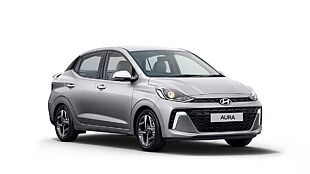
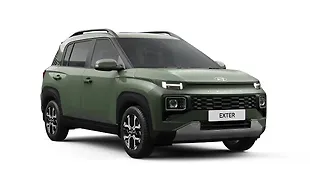
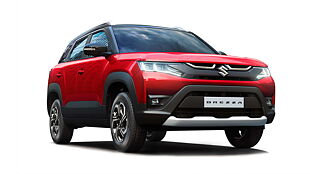

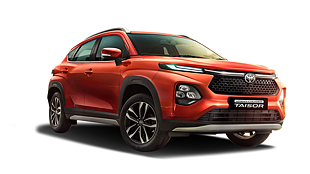


Explore Used Nissan Kicks
Nissan Kicks XV Pre (O) 1.5 D [2019] Reviews
- (16 Ratings) 14 Reviews
4.3/5
- Kick superb vehicle! Go for it !I'm highly satisfied with this car. It drives like an absolute charm. Pros: A driver's delight Excellent ride quality Steering feedback is awesome Great handling and build quality Perfect High speed stability Cons: Finding a right seating posture is difficult due to unavailability of telescopic steering adjustment and unusual seat height function No dead pedal Heavy clutchRating parameters(out of 5)5
Exterior
5Comfort
5Performance
5Fuel Economy
5Value For Money
About the ReviewerPurchase NewDriven forFew thousand kilometersRead MoreWas this review helpful?00 - Great underrated vehicle with great build quality1. Buying experienced was good. 2. Awesome driving experienced, great handling, road grip. I also drive Creta BS6 through hilly areas in Meghalaya around 1000kms and recently I went to Raipur from Guwahati and drive my Kicks around 3500 kms, but I feel Kicks handling, suspension and drivability is better than Creta. 3. No doubt Kicks is a funky looking SUV presently available in Indian market. I really like it's side profile, bigger than is rivals. As far as performance is concerned I feel Kicks really made for highways and long tours. Good hilly performance. 4. Service and Maintenance cost is reasonable. 5. Pros: Handling, Drivability, high-speed stability, cornering ability, perfectly tuned suspension, diesel engine refinement, build quality, safety, cabin quality, music system is also good, Ac glove box, really good AC, class leading GC of 210mm Cons: Some interior ergonomic issues, no cup holders in front, music controls are behind the steering wheel. Verdict: If You love highway driving, long tours, drivability, stability, above some unnecessary features than you should definitely consider this vehicle above it's rivals.Rating parameters(out of 5)About the ReviewerPurchase NewDriven forFew thousand kilometersRead MoreWas this review helpful?70
- Bindaas drive safelyRiding experience is very much joyful with easy gear shift and very easy acceleration effortless braking and a small turning radius and above all the seating experience is top of all.Rating parameters(out of 5)5
Exterior
5Comfort
5Performance
5Fuel Economy
5Value For Money
About the ReviewerPurchase Not PurchasedDriven forDid a short drive onceRead MoreWas this review helpful?00
Kicks XV Pre (O) 1.5 D [2019] FAQs
- Home
- Nissan Cars
- Kicks
- XV Pre (O) 1.5 D [2019]

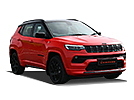


![Nissan Kicks XV Pre (O) 1.5 D [2019] Nissan Kicks XV Pre (O) 1.5 D [2019]](https://imgd.aeplcdn.com/664x374/cw/ec/32596/Nissan-Kicks-Right-Front-Three-Quarter-159680.jpg?wm=0&q=80)
